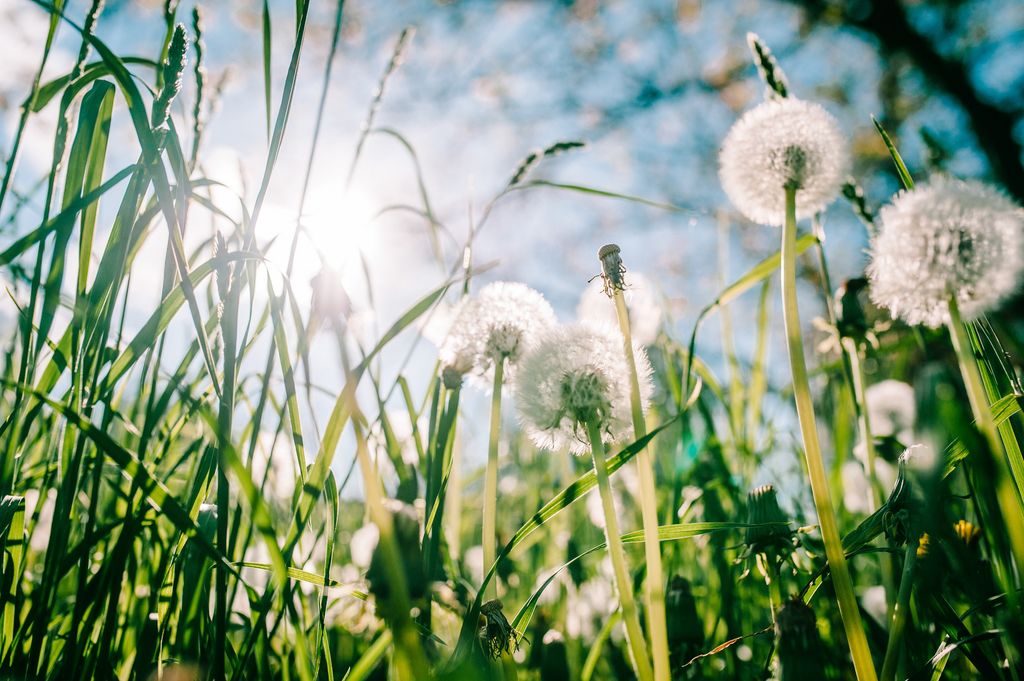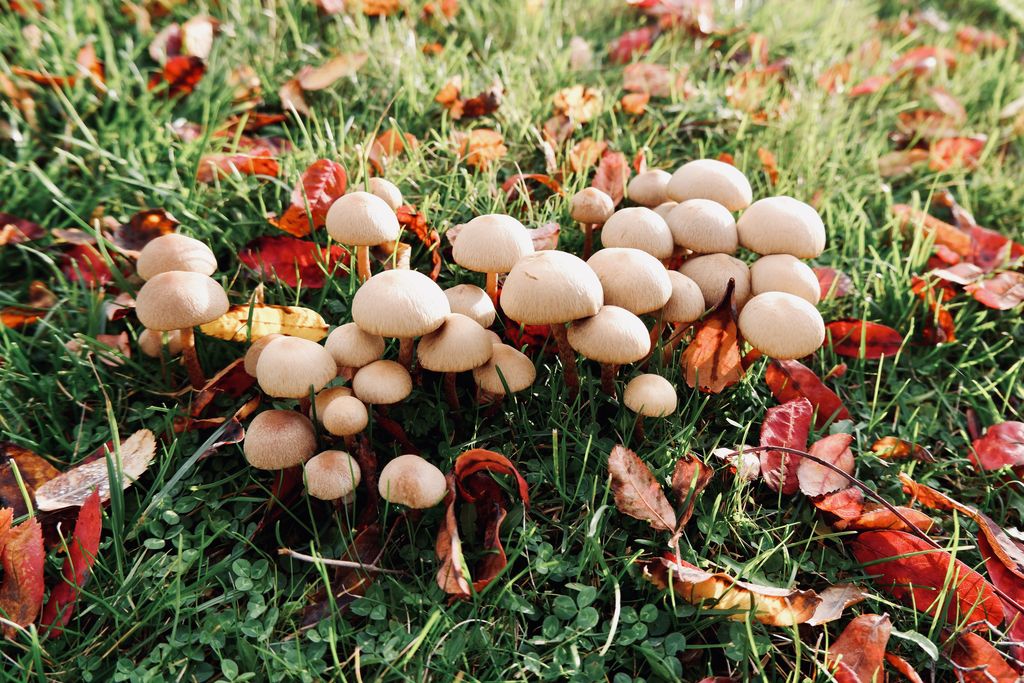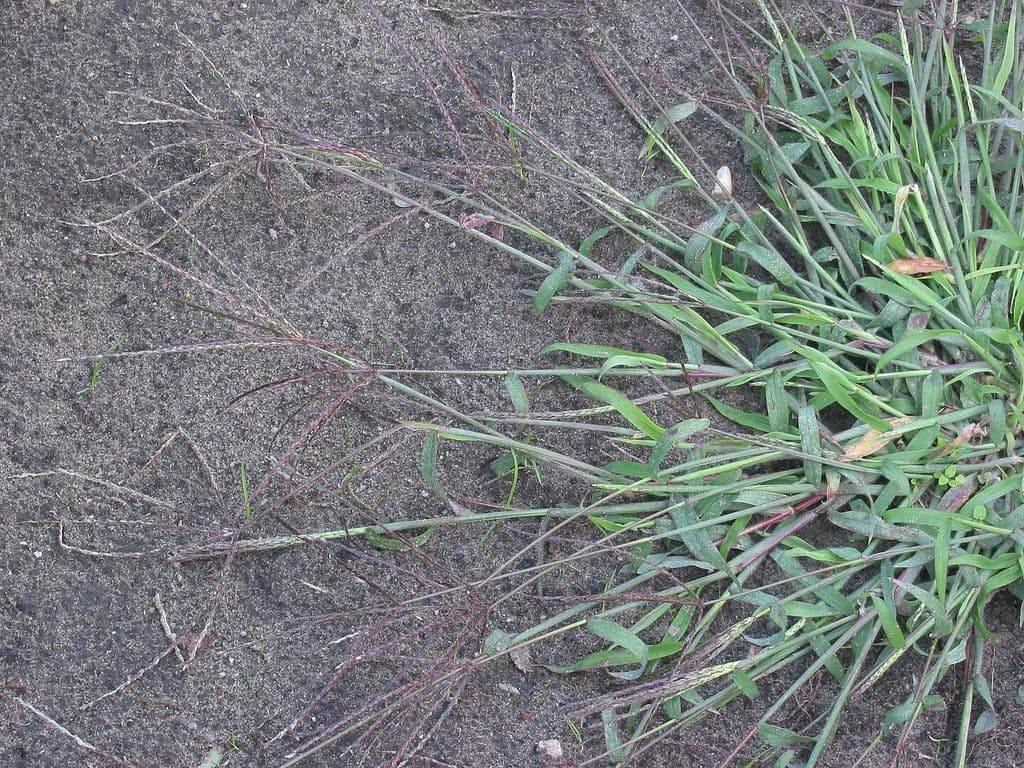Few things are more frustrating for homeowners than seeing bright yellow dandelions dotting an otherwise pristine lawn.
These stubborn weeds not only disrupt the aesthetic appeal of your yard but can also compete with your grass for nutrients and water, weakening your lawn over time.
In this guide, we’ll cover everything you need to know about killing dandelions—whether you prefer manual removal, organic solutions, or chemical treatments—so you can reclaim your yard and keep it looking its best.
This post contains affiliate links. As an Amazon Associate, I earn from qualifying purchases at no additional cost to you.
Understanding Dandelions
What Are Dandelions?
Dandelions (Taraxacum officinale) are perennial weeds known for their bright yellow flowers and fluffy white seed heads.
While they may look harmless, their ability to spread quickly and establish deep roots makes them a challenge for homeowners trying to maintain a healthy lawn.
Dandelion Lifecycle:
- Growth: Dandelions grow from seeds that germinate in early spring or fall. The plant has a rosette of leaves at ground level and a single taproot that can grow several feet deep.
- Flowering: They bloom multiple times throughout the year, typically from early spring to late fall.
- Seed Spread: Each flower head can produce up to 200 seeds, which are easily dispersed by wind.
Why They Are Considered Weeds:
- Deep Taproots: The long taproot of a dandelion can extend 6 to 18 inches underground, allowing it to access deep soil nutrients and water.
- Rapid Spread: Dandelions spread not only through their seeds, which can travel long distances, but also through root fragments. Even if a portion of the root remains in the soil after pulling, the plant can regenerate.
| Feature | Dandelion Impact |
|---|---|
| Taproot Depth | 6–18 inches |
| Seed Production | Up to 200 seeds per flower |
| Spread Method | Seed dispersal and root regeneration |
Why Are They So Hard to Kill?
Dandelions are incredibly resilient due to several factors:
- Deep Taproot: Their deep taproots allow them to survive in harsh conditions and regrow even when most of the plant is removed.
- Seed Dispersal: Wind can carry dandelion seeds far from the original plant, allowing them to quickly colonize new areas.
- Root Regeneration: If any part of the taproot remains in the soil, the dandelion can regenerate, making complete removal difficult.
In short, their ability to quickly bounce back from partial removal makes dandelions particularly difficult to eliminate permanently.
Manual Methods for Removing Dandelions

Hand-Pulling Dandelions
One of the most straightforward ways to tackle dandelions is by manually pulling them from the ground.
However, it requires precision to ensure the entire root is removed, or the dandelion will regrow.
Step-by-Step Guide:
- Water the Area: It’s easier to pull dandelions when the soil is moist. The day after a rain or watering your lawn deeply will loosen the soil and make pulling more effective.
- Use the Right Tools: Use a weed puller, dandelion digger, or a flat screwdriver to get under the taproot.
- Grip the Base of the Plant: Grasp the dandelion as close to the ground as possible.
- Loosen the Soil Around the Root: Push the weed puller or tool deep into the ground next to the root, gently rocking it back and forth to loosen the soil.
- Pull Slowly and Firmly: Slowly pull the plant from the ground, making sure to extract as much of the root as possible.
Tools You Might Need:
- Weed Puller
- Dandelion Digger
- Flathead Screwdriver
When to Pull:
- The best time to pull dandelions is when the soil is wet and after a good rain.
- Pulling dandelions from dry, compact soil increases the chances of leaving part of the root behind.
Digging Out the Roots
Sometimes, hand-pulling alone won’t be enough to remove the entire root.
When dandelions are well-established, digging deep into the soil may be necessary.
Techniques for Digging Deeper:
- Use a Shovel: For larger, more established dandelions, a small shovel can help you get deeper into the soil.
- Dig Wide: Rather than digging straight down, create a wide hole around the base of the dandelion to minimize the chances of snapping the root.
- Remove the Full Taproot: Keep digging until you’ve exposed the full length of the root. Break up the soil to ensure all fragments are removed.
Prevention After Removal
Once you’ve removed a dandelion, filling in the hole it leaves behind is crucial to prevent new weeds from taking root in that spot.
Steps for Prevention:
- Fill the Hole with Soil: Use fresh topsoil to fill in any holes left after pulling out the dandelions.
- Seed or Sod the Area: If the dandelion was removed from your lawn, overseed the bare patch with grass seed or place sod to help the grass outcompete any new weed growth.
- Water and Maintain: Water the area well and continue maintaining it to promote healthy grass growth.
| Task | Why It’s Important |
|---|---|
| Fill the Hole | Prevents other weeds from taking root |
| Overseed or Add Sod | Helps grass outcompete new dandelions |
| Water and Maintain | Promotes healthier lawn growth |
Organic Methods for Killing Dandelions
For those looking to avoid chemicals, organic methods can be effective in managing dandelion growth.
These methods are often less harmful to the environment and safer for pets and children.
Vinegar Solution
Vinegar is a natural herbicide that can be highly effective at killing dandelions when applied correctly.
However, it should be used carefully to avoid damaging surrounding plants.
Recipe for Vinegar-Based Weed Killer:
- Ingredients:
- 1 gallon of white vinegar (with 5% acetic acid)
- 1 tablespoon of dish soap (to help the vinegar stick to the leaves)
Step-by-Step Application:
- Mix the Solution: Combine the vinegar and dish soap in a spray bottle.
- Choose a Sunny Day: Apply the solution on a dry, sunny day. The heat from the sun will help intensify the vinegar’s effectiveness.
- Spray Directly on the Dandelion: Target the leaves and center of the dandelion plant, avoiding contact with the surrounding grass or plants.
- Monitor Results: Within a few hours to a day, the leaves should start to wilt and brown. If needed, repeat the application in a few days.
Precautions:
- Avoid Contact with Grass: Vinegar is non-selective, meaning it can kill any plant it touches. Be careful to spray only the dandelions.
- Reapplication May Be Necessary: Since vinegar doesn’t reach the root system as deeply as some other methods, more than one application might be needed for established dandelions.
Boiling Water
Pouring boiling water directly onto dandelions is another simple, chemical-free method to kill these weeds.
The intense heat destroys the plant’s cells, killing it quickly.
How to Apply Boiling Water:
- Boil Water: Heat a pot of water to a rolling boil.
- Carefully Pour on Dandelions: While still boiling, pour the water directly over the dandelion, ensuring you cover both the leaves and the root zone.
- Repeat as Needed: This method works well on young or small dandelions. Repeat the treatment if necessary for more established weeds.
Best Areas for Use:
- Sidewalks and Driveways: Boiling water works best in areas where you don’t need to worry about killing grass or nearby plants, such as cracks in sidewalks or along driveways.
- Non-Lawn Areas: This method is great for hard surfaces but less practical for lawns, as it will kill any surrounding grass.
Corn Gluten Meal
Corn gluten meal is a natural pre-emergent herbicide that can prevent dandelion seeds from germinating.
I highly recommend Jonathan Green Corn Gluten. It feeds the lawn while preventing crabgrass, dandelions, and over 25 other broadleaf weeds to grow.
While it won’t kill existing dandelions, it’s a great long-term solution for stopping new dandelions from taking hold in your lawn.
How Corn Gluten Meal Works:
- Inhibits Seed Germination: Corn gluten meal releases organic compounds that prevent dandelion seeds (and other weeds) from sprouting.
Application Timing for Best Results:
- Apply in Early Spring: For best results, apply corn gluten meal in early spring, before dandelion seeds have a chance to germinate.
- Spread Evenly: Use a spreader to apply the meal evenly across your lawn at a rate of about 20 pounds per 1,000 square feet.
- Water Lightly: After application, water the area lightly to help the corn gluten meal settle into the soil, but don’t overwater.
- Reapply Annually: To maintain effectiveness, reapply each spring as part of your lawn care routine.
| Organic Method | Best For | Effectiveness Time |
|---|---|---|
| Vinegar Solution | Small areas, individual plants | Immediate to 1 day |
| Boiling Water | Sidewalks, driveways | Immediate |
| Corn Gluten Meal | Preventing future dandelions | Long-term |
Chemical Solutions for Killing Dandelions
In addition to choosing the right type of herbicide, understanding the active ingredients that target dandelions can significantly improve the effectiveness of your treatment.
Here’s a closer look at both selective and non-selective herbicides, along with the key chemicals to look for.
Selective Herbicides
Selective herbicides target broadleaf weeds like dandelions without harming grass.
These products are ideal for lawns where you want to eliminate dandelions while maintaining healthy grass.
Common Active Ingredients in Selective Herbicides:
- 2,4-D (2,4-Dichlorophenoxyacetic acid)
- How It Works: 2,4-D mimics plant growth hormones, causing uncontrolled growth that kills the plant.
- Effective Against: Dandelions and other broadleaf weeds like clover and thistle.
- Product Example: Ortho Weed B Gon, Weed & Feed products.
- Dicamba
- How It Works: Dicamba disrupts the growth of broadleaf weeds by interfering with cell division.
- Effective Against: Dandelions, chickweed, and ground ivy.
- Product Example: Trimec Lawn Weed Killer, Bayer Advanced All-in-One Lawn Weed & Crabgrass Killer.
- MCPP (Mecoprop)
- How It Works: This chemical targets broadleaf weeds by inhibiting growth.
- Effective Against: Dandelions, plantain, and chickweed.
- Product Example: Often combined with 2,4-D and Dicamba in many broadleaf weed control formulas.
I personally recommend “Triad Select 3-Way Herbicide”. It’s a combination of three selective herbicides to control a wide variety of hard-to-kill broadleaf weeds, including dandelions.
Application Techniques:
- Spraying: For targeted, spot treatment, use a liquid formulation. Mix the product according to label instructions and spray directly onto dandelions.
- Granular: For widespread dandelions, use a granular formulation, typically combined with fertilizers in weed-and-feed products.
Pros of Selective Herbicides:
- Spares Your Grass: These products kill only broadleaf weeds, leaving your grass unharmed.
- Effective for Lawns: Perfect for large areas of turf where manual weeding isn’t practical.
| Active Ingredient | How It Works | Targeted Weeds | Product Examples |
|---|---|---|---|
| 2,4-D | Disrupts plant growth hormones | Dandelions, clover, thistle | Triad Select 3-Way Herbicide |
| Dicamba | Interferes with cell division | Dandelions, chickweed, ground ivy | Trimec Lawn Weed Killer, Bayer Advanced |
| MCPP (Mecoprop) | Inhibits growth | Dandelions, plantain, chickweed | Combined with 2,4-D in broadleaf herbicides |
Non-Selective Herbicides
Non-selective herbicides kill any plant they come in contact with, including grass, dandelions, and other vegetation.
These herbicides are useful for areas where you want to clear all plant life, such as driveways, walkways, or patios.
Common Active Ingredients in Non-Selective Herbicides:
- Glyphosate
- How It Works: Glyphosate is a systemic herbicide, meaning it is absorbed by the plant and moves to the roots, killing the entire plant.
- Effective Against: All plants, including dandelions, grass, and other vegetation.
- Product Example: Roundup, Spectracide Weed & Grass Killer.
- Diquat
- How It Works: Diquat is a fast-acting contact herbicide that destroys plant cells on contact.
- Effective Against: All plants on contact, especially in non-lawn areas.
- Product Example: Reward Herbicide, Spectracide Fast Acting Weed & Grass Killer.
When to Use Non-Selective Herbicides:
- Spot Treatment for Hard Surfaces: These herbicides are best for driveways, sidewalks, and patios where no plants are desired.
- Pre-Planting in Garden Beds: Use before planting to clear an area of all existing weeds and grasses.
Emphasize Caution:
- Kills Everything: Use care when applying non-selective herbicides. They will kill any plant they touch, so avoid spraying near desirable plants.
| Active Ingredient | How It Works | Targeted Weeds | Product Examples |
|---|---|---|---|
| Glyphosate | Systemic, kills root system | All plants, including dandelions | Roundup, Spectracide Weed & Grass Killer |
| Diquat | Contact herbicide, fast-acting | All plants it touches | Reward Herbicide, Spectracide Fast Acting |
When to Apply Chemicals
For optimal results with chemical herbicides, timing and weather conditions are critical.
Ideal Seasons:
- Spring and Fall: The best times to apply herbicides are in early spring when dandelions are actively growing, or in the fall when they are storing nutrients in their roots for winter.
Weather Considerations:
- Avoid Windy Days: Apply on calm days to prevent herbicide drift, which can damage nearby plants.
- Apply in Dry Conditions: Make sure no rain is expected for at least 24 hours after application to allow the herbicide to work effectively.
Follow Product Instructions:
Always read and follow the label instructions carefully.
Overuse or improper application can damage your lawn or garden, and may pose environmental risks.
| Timing Tip | Why It’s Important |
|---|---|
| Spring/Fall | Dandelions are most active |
| Dry Conditions | Prevents dilution and wash-off |
| No Wind | Prevents accidental drift |
Preventing Dandelions from Coming Back
Once you’ve removed dandelions from your lawn, keeping them from returning is essential for maintaining a healthy and weed-free yard.
Prevention is always easier than eradication, and a few simple lawn care strategies can help keep dandelions at bay.
Mowing:
- Mow High: Keep your grass about 3 inches tall. Taller grass shades the soil, making it harder for dandelion seeds to germinate.
- Mow Frequently: Regular mowing prevents dandelions from flowering and seeding.
Overseeding:
- Fills Bare Spots: Overseeding ensures that any bare or thinning areas are quickly covered with new grass, leaving no room for dandelions to invade.
- Grass Variety: Consider overseeding with a hardy variety of grass suited to your region. Varieties such as Kentucky Bluegrass or Fescue are often good choices.
Keep an eye on your lawn:
- Check After Mowing: After each mow, scan your lawn for any dandelion seedlings or small plants that can be pulled easily.
- Early Spring Inspections: Dandelions sprout early in the season. A thorough check in early spring can help catch them before they flower.
- Immediate Removal: If you spot a dandelion, remove it immediately—roots and all—to prevent regrowth.
The Environmental Perspective

While dandelions may be a nuisance in a manicured lawn, they also play a valuable role in natural ecosystems.
Understanding their environmental benefits can help you adopt a balanced approach to controlling them.
The Role of Dandelions in Ecosystems
Dandelions are not all bad. In fact, they contribute to ecosystems in a variety of ways, especially by supporting pollinators and soil health.
Dandelions and Pollinators:
- Early Food Source: Dandelions are one of the first flowers to bloom in early spring, providing a crucial food source for bees, butterflies, and other pollinators when few other flowers are available.
- Nectar and Pollen: Their bright yellow flowers are rich in nectar and pollen, which helps sustain pollinator populations.
Soil Health Benefits:
- Deep Taproots: Dandelions deep roots can break up compacted soil, allowing water and nutrients to penetrate deeper layers of the earth.
- Nutrient Cycling: As the leaves and roots decay, they return nutrients to the soil, enriching it for other plants.
A Balanced Approach: Reducing Dandelions in Lawns, Preserving Them in Other Areas
Rather than trying to eliminate dandelions entirely, consider a balanced approach.
You can focus on keeping your lawn free of dandelions while allowing them to grow in less-managed areas, such as meadows, roadside verges, or wildflower gardens, where they can benefit the environment.
Strategies for a Balanced Approach:
- Maintain Weed-Free Lawns: Use the methods discussed to keep dandelions out of your lawn for aesthetic and practical reasons.
- Support Pollinators in Natural Areas: Allow dandelions to grow in wild or less-managed spaces where they don’t interfere with your lawn. This supports local wildlife and reduces the need for widespread herbicide use.
| Environmental Role | Benefit to Ecosystem |
|---|---|
| Pollinator Support | Early food source for bees and butterflies |
| Soil Improvement | Breaks up compacted soil, recycles nutrients |
This strategy allows you to control dandelions where necessary while respecting their role in natural ecosystems.
Conclusion
Getting rid of dandelions requires a combination of approaches, from manual removal to organic and chemical methods.
Whether you’re pulling them by hand, using natural solutions like vinegar, or applying selective herbicides, persistence is key.
Consistent lawn care and preventive measures will help keep these stubborn weeds under control.
Try out the methods that work best for your lawn, and feel free to share your own tips or experiences in the comments below!
F.A.Q
1. Why do dandelions keep coming back even after I pull them?
Dandelions have deep taproots, and if even a small piece of the root remains in the soil, the plant can regenerate. It’s crucial to remove the entire root to prevent regrowth.
2. What’s the best time to apply herbicides to dandelions?
The best times to apply herbicides are in early spring or fall when dandelions are actively growing. Applying during these periods ensures the chemicals are absorbed more effectively.
3. Are there any natural methods to kill dandelions without chemicals?
Yes! You can use a vinegar solution, boiling water, or corn gluten meal to naturally kill or prevent dandelions from growing. These methods are eco-friendly but may require multiple applications.
4. How can I prevent dandelions from growing in my lawn?
Maintaining a healthy lawn by mowing high, fertilizing, watering deeply, and overseeding bare spots can help prevent dandelions. Mulching and regular monitoring can also keep them at bay.
5. Are dandelions harmful to my lawn?
While dandelions compete with grass for nutrients and water, they are not inherently harmful. However, they can take over quickly and reduce the overall health and appearance of your lawn if not controlled.



